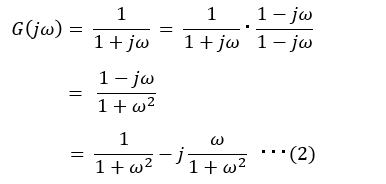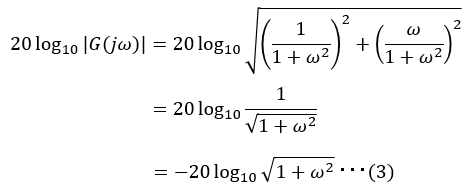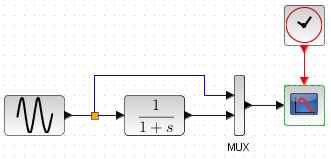How to draw a Bode diagram (first-order delay system) |
|||||||||||
・First-order delay system ・Transfer function ・Bode plot ・secondary delay system ・Bode plot ・Butterworth filter ・Bessel filter ・Transfer function ・Pade approximation |
・ In Japanese
Explain how to draw a Bode diagram of the transfer function of a first-order delay system.
(Reference: Basics of how to draw a Bode diagram) ■Transfer function of first-order delay system
as below.
■Expressing the transfer function of a first-order delay system on the complex plane
Express equation (2) on the complex plane as follows. A Bode diagram can be drawn by calculating the absolute value and angle of G(jω). ■Gain characteristics of transfer function of first-order delay system
The gain characteristics are calculated in decibels, so they are as follows. ■Phase characteristics of transfer function of first-order delay system
Phase characteristics are easier to understand if you think about them on the complex plane. This characteristic also changes depending on the value of ω, so we will divide it into cases. ■Check the characteristics of the first-order delay system by simulation
The results when ω=1[rad/s] are shown below. The black line is the input, and the green line is the output. (Reference: How to use scilab)
|
|
|||||||||













